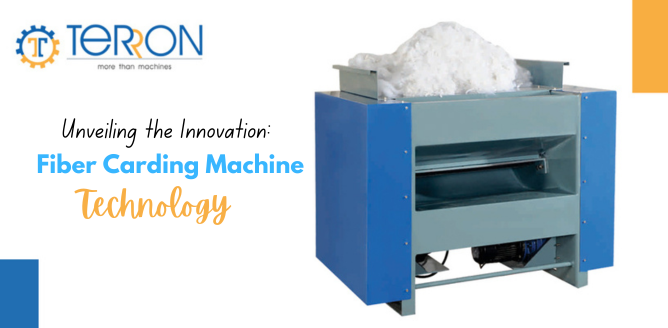In the realm of textile manufacturing, fiber carding machines play a pivotal role in transforming raw fibers into yarn or fabric. Let's embark on a journey to explore the evolution of fiber carding machine technology, delve into the various types of fiber carding machines, and uncover the advancements shaping the textile industry.
Fiber Carding Machine Technology: A Primer
Fiber carding machines are mechanical devices designed to align and clean fibers, preparing them for further processing in textile production. This technology has undergone significant advancements over the years, revolutionizing the efficiency and precision of fiber processing.

Evolution of Fiber Carding Machine Technology
The evolution of fiber opener machines traces back to the Industrial Revolution, where manual carding techniques were gradually replaced by mechanized processes. Early carding machines utilized wire-covered cylinders to separate and align fibers, laying the foundation for modern carding technology.
With advancements in engineering and automation, contemporary fiber carding machines boast enhanced capabilities, including higher throughput, improved fiber alignment, and customizable processing parameters. These innovations enable textile manufacturers to achieve superior yarn quality and production efficiency.
Types of Fiber Carding Machines
-
Cylinder Carding Machines: The most traditional type of carding machine, cylinder carding machines feature rotating cylinders covered with wire or pins. Fibers are fed between the cylinders, where they are carded, aligned, and formed into a continuous web.
-
Drum Carding Machines: Drum carding machines utilize rotating drums equipped with carding elements to process fibers. These machines offer flexibility in carding different fiber types and blends, making them suitable for a wide range of applications.
-
Random Carding Machines: Random carding machines employ a unique mechanism to produce a random fiber arrangement, ideal for creating textured yarns or nonwoven fabrics with a distinctive appearance.
-
Crosslappers: Crosslappers are specialized machines used in conjunction with carding machines to layer and crosslay fiber webs, facilitating the production of multilayered fabrics or nonwovens with uniform thickness and density.
Advancements Shaping the Future
Recent advancements in fiber carding machine technology focus on enhancing precision, automation, and sustainability. Innovations such as computerized control systems, AI-driven processing algorithms, and eco-friendly materials contribute to improved product quality, operational efficiency, and environmental stewardship.
As the textile industry continues to evolve, fiber carding machine technology remains at the forefront of innovation, driving progress and enabling manufacturers to meet the demands of a dynamic market landscape.
In conclusion, fiber carding machine technology represents a cornerstone of textile manufacturing, enabling the transformation of raw fibers into high-quality yarns and fabrics. With a rich history of evolution and a promising future of innovation, fiber carding machines continue to play a vital role in shaping the textile industry's trajectory towards excellence and sustainability.
Also read: Common Mistakes to Avoid When Using a Fiber Carding Machine



0 Comments